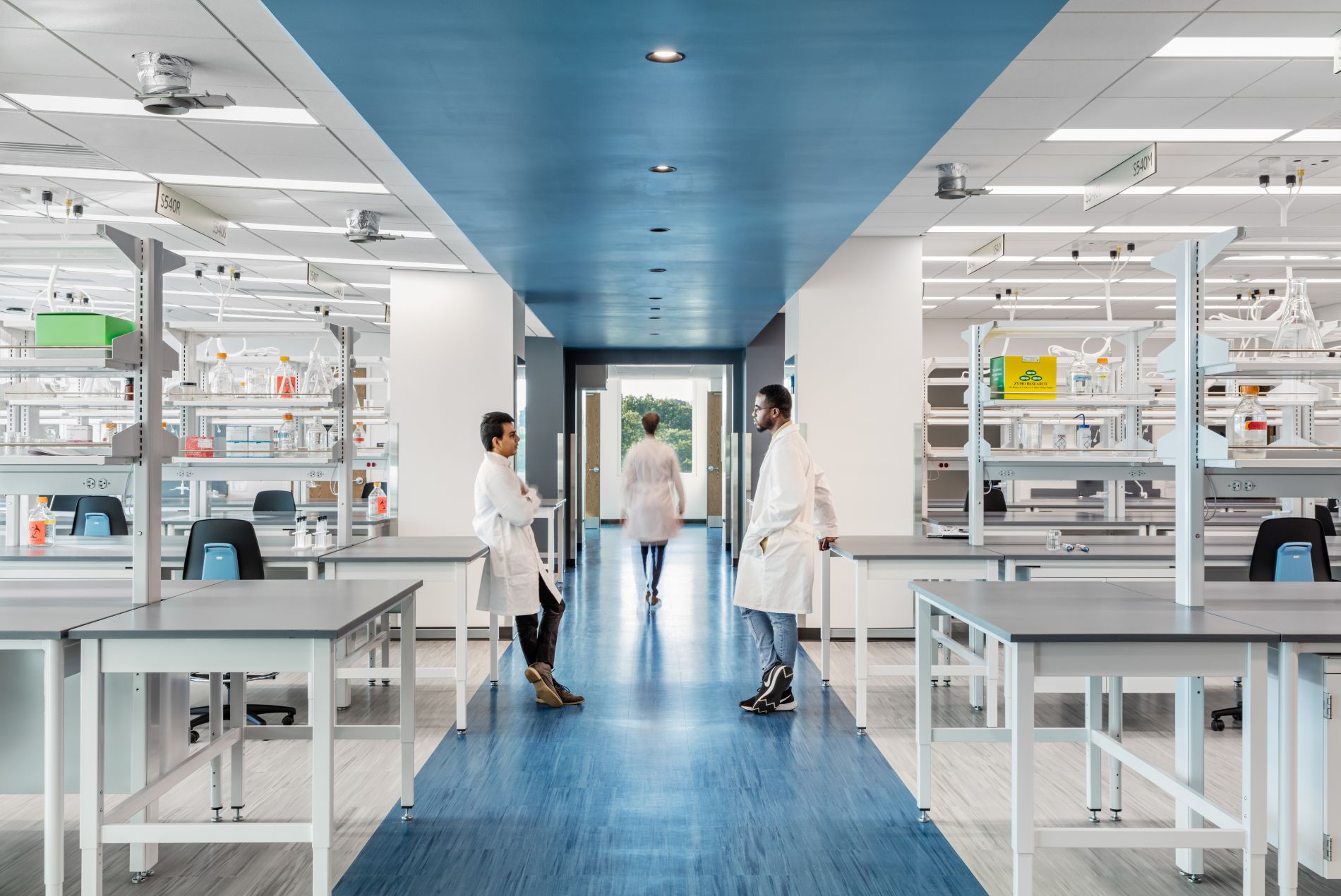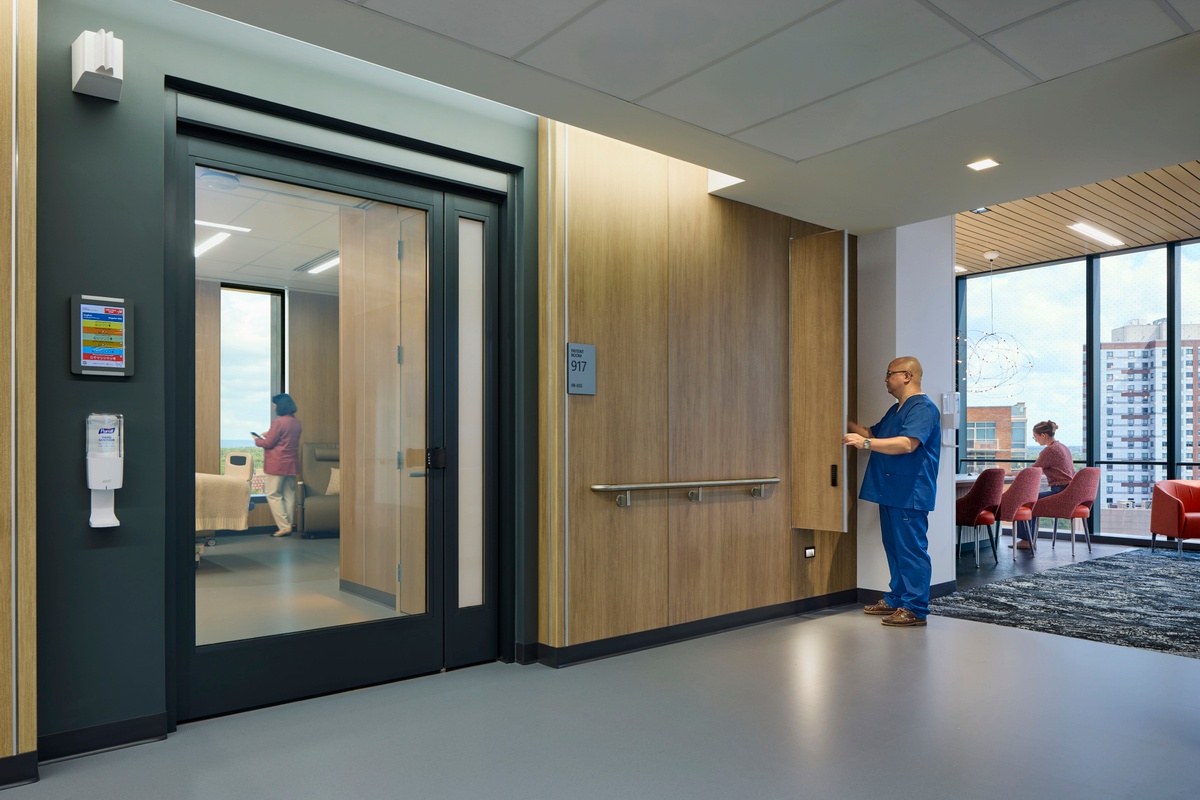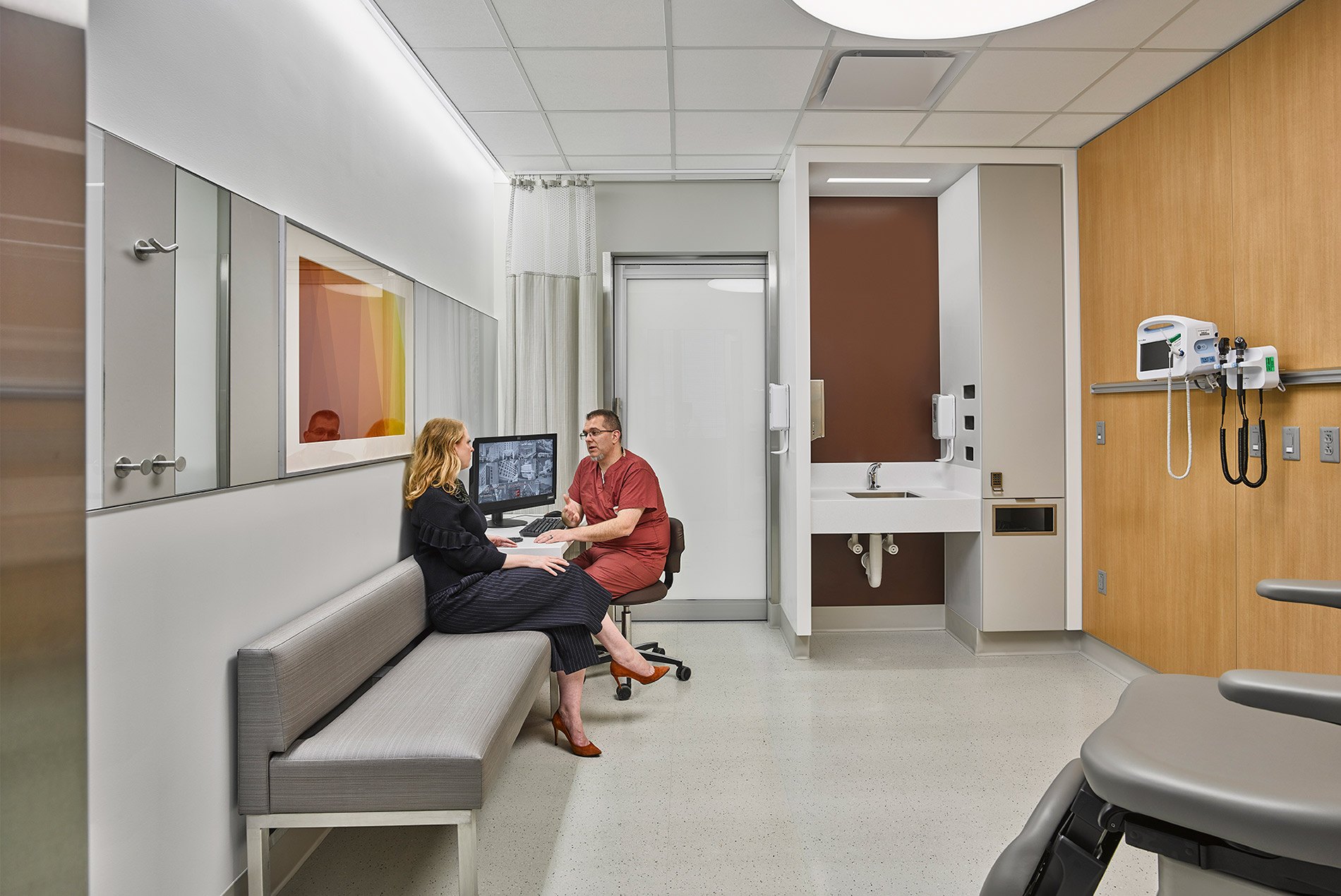Cancer is not static. It evolves, mutates, adapts and resists. That volatility makes clinical trials a critical component of cancer treatment. Yet despite advances resulting from these studies, only 7% of U.S. cancer patients enroll in clinical trials.
Health systems and architects are now rethinking cancer hospitals to embed trial infrastructure at every level to support healing and medical advancement. For institutions serious about innovation, the question becomes: How do we design cancer hospitals that don’t just treat disease—but accelerate discovery?
This article unpacks that question through three design imperatives: Operations, Resources & Design and Accessibility.

Operations: Embedding Research into the Flow of Care
Designing a hospital to support clinical trials requires more than just adding labs or trial suites—it demands strategic operational planning. Every decision about adjacency, circulation and visibility can either accelerate discovery or slow it down. Three areas that caregivers, researchers and designers must focus on during the planning stage are: 1) fostering collaboration 2) showcasing discovery and 3) programming for efficiency and care.
Fostering Collaboration
Designing for clinical trials starts with creating an environment where collaboration is effortless. When clinicians and researchers work in separate facilities, the handoff of ideas, specimens and data slows discovery. By embedding research within the hospital—placing labs on adjacent floors or wings—hospitals can shorten the distance between discovery and treatment. Common spaces, such as shared break areas, consultation rooms and collaboration lounges, allow doctors, nurses and scientists to meet informally, exchange insights and build the relationships that speed discovery. In this way, architecture actively shapes the pace and quality of collaboration.
Showcasing Discovery
Patients and families want transparency when it comes to their treatment and the science behind it. Hospitals are responding by showcasing research activity as part of the visitor experience. Glass-walled labs allow patients to view the research underway in the hospital without compromising safety or security. Corridors that pass by these active research areas reinforce the sense that discovery is unfolding alongside treatment. Education zones and exhibits embedded within the hospital can also help to raise awareness and share promising new advancements. For institutions, this visibility strengthens their brand as research leaders. For patients, it instills hope, demonstrating that while they are receiving today’s therapies, tomorrow’s breakthroughs are already in motion.
Programming for Efficiencies and Care
Equally important is the behind-the-scenes choreography that ensures trials run smoothly without disrupting the patient experience. Thoughtful front-of-house and back-of-house planning helps maintain this balance. Public-facing areas—lobbies, waiting rooms, consultation suites—should be calm, welcoming and intuitive. Back-of-house corridors, staff workrooms and specimen-handling areas must prioritize efficiency, security and infection control. Planners and designers should carefully map where these realms intersect, ensuring supplies, medications and biospecimens move discreetly and reliably. By programming for efficiency, hospitals can elevate patient and staff experiences as well as clinical research.

Resources and Design: Building the Infrastructure for Trials
While operations determine how a hospital functions, physical resources make clinical trials feasible. These are the tangible elements that must be considered with research protocols in mind.
Specialized Clinical Trial Spaces
Dedicated spaces ensure hospitals can meet the strict requirements of clinical research. Consultation rooms provide private settings for patients and families to review trial information and give consent. Secure medication storage—lock boxes, refrigerated units, and monitored dispensing stations—keeps investigational drugs safe and compliant. Sample-processing labs positioned near treatment areas reduce transport time and maintain specimen integrity, while infusion suites designed for extended monitoring allow patients to participate in trials without stepping outside standard care. Even small but critical details, like strategically located lockers for trial materials, contribute to efficiency and reliability.
Robust and Flexible Infrastructure
Behind these spaces, the building systems themselves form the backbone of trial readiness. High-capacity HVAC, redundant power supplies and precision mechanical systems are necessary to support specialized labs. Patient rooms, imaging suites, and procedure areas must be adaptable, with structural grids sized for evolving equipment and modular layouts that can expand or contract as therapies advance. By designing with flexibility in mind, hospitals can adapt from small pilot studies to large-scale trials without costly overhauls.
Multidisciplinary Design
Bringing research and care together under one roof requires more than healthcare expertise. Architects must work hand in hand with lab planners, engineers and technology specialists to create environments that support both patient care and scientific discovery. This integration ensures facilities meet strict safety and cleanliness protocols while staying agile enough to accommodate therapies and equipment that don’t yet exist. Multidisciplinary design isn’t optional—it’s what allows hospitals to function simultaneously as treatment centers and research engines.

Accessibility: Expanding Participation and Equity
Even the most sophisticated clinical trial infrastructure will fall short if patients don’t feel welcome or able to participate. Accessibility in this context extends beyond ADA compliance to include trust, equity and patient experience. By shaping spaces that reduce barriers—physical, cultural and psychological—designers can help expand trial participation to more people, including communities historically underrepresented in research.
Creating Comfort and Trust
Cancer treatment and participation in clinical trials can often be isolating, physically and emotionally demanding, and marked by uncertainty. Compassionate spaces balancing privacy and human connection with natural daylight, physical comfort and personal control go a long way to ensuring patients feel less stress during frequent unknowns. While patients may need solitude during treatment, they also benefit from opportunities for human connection that ease feelings of isolation. Amenities such as image renewal spaces, demonstration kitchens and therapy gyms extend care beyond the clinical, supporting emotional wellbeing as much as physical health. These ‘soft’ design elements can influence whether someone decides to enroll in a clinical trial—and whether they recommend the experience to others.
Designing for Equity
Clinical trials rely on diverse sets of participants to broaden the applicability of research findings, foster new biological discoveries and inform more precise treatment approaches. Spaces that are easy to navigate, culturally attuned for all and clearly communicate their purpose can help establish trust and encourage engagement. Childcare areas, flexible scheduling zones and support for longer visits help to reduce practical barriers for patients balancing work, family and travel.
Extending Care Beyond the Hospital
Accessibility also means rethinking the footprint of care. Increasingly, hospitals are serving as research hubs with satellite clinics acting as spokes. This model allows patients to participate in aspects of clinical trials closer to home while still being linked to the expertise and infrastructure of a central cancer center. For designers, this can mean creating spaces that support telehealth consultations, secure data sharing and seamless patient handoffs between sites. A well-planned hub-and-spoke system can extend the reach of discovery, making trials feasible for patients who might otherwise be excluded.
Conclusion: Hospitals as Catalysts for Discovery
The future of oncology care will be written by science—with support of architecture. By embedding research into the heart of hospitals, designing spaces that support complex protocols and ensuring environments are welcoming and equitable, cancer centers can become more than places of treatment. They can be catalysts for discovery, helping to lessen the burden of disease and improve outcomes for patients everywhere.
Want to Know More? Connect with Our Experts
Colleen Harrington is a senior project interior designer based in HOK’s Philadelphia studio. She specializes in designing complex healthcare facilities that integrate clinical excellence with patient-centered care.
Kathleen Schwarz is the director of HOK’s Healthcare Consulting group. A registered nurse, she draws on her clinical hospital experience to help clients assess their facility needs and develop strategic plans that support their organizational goals.